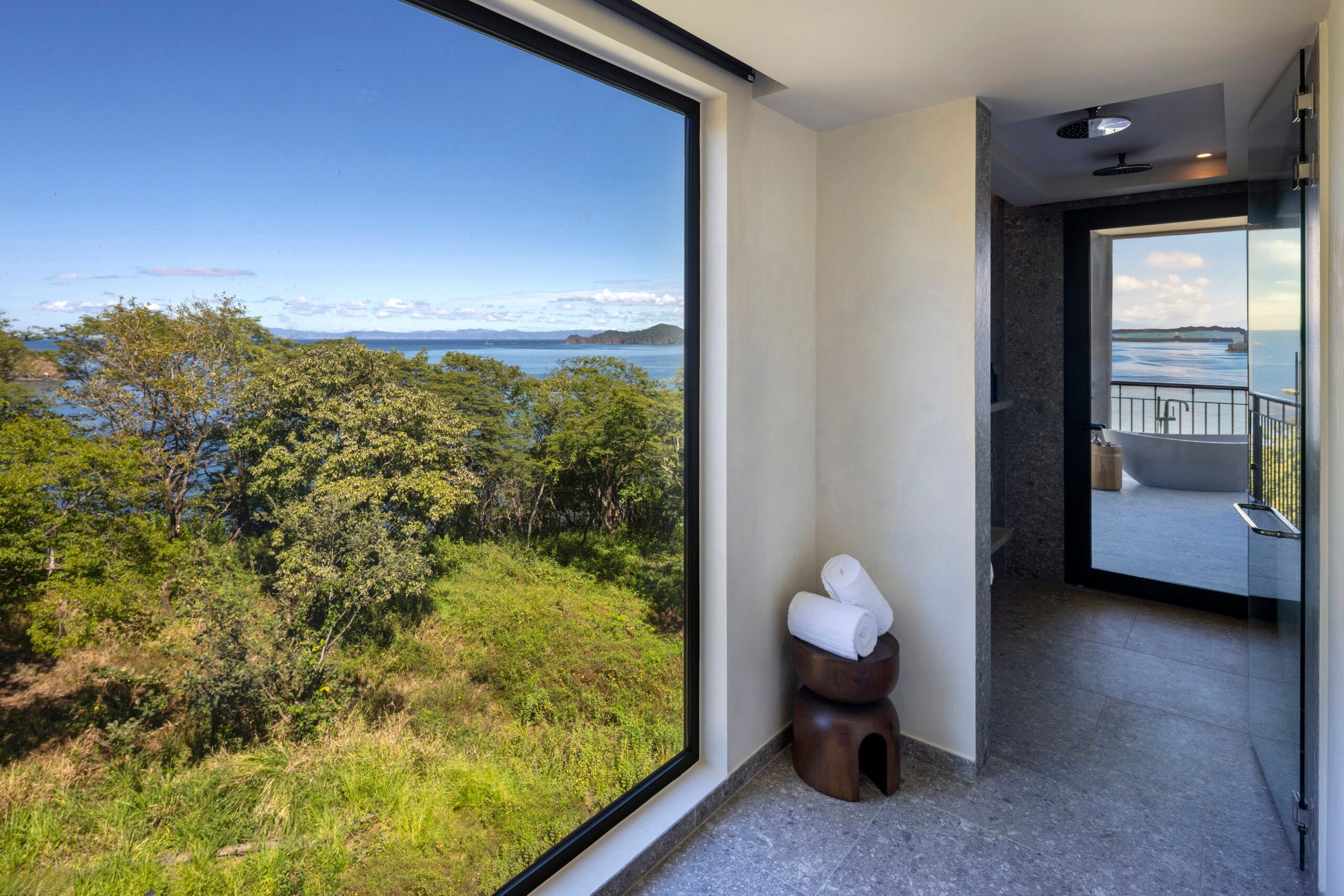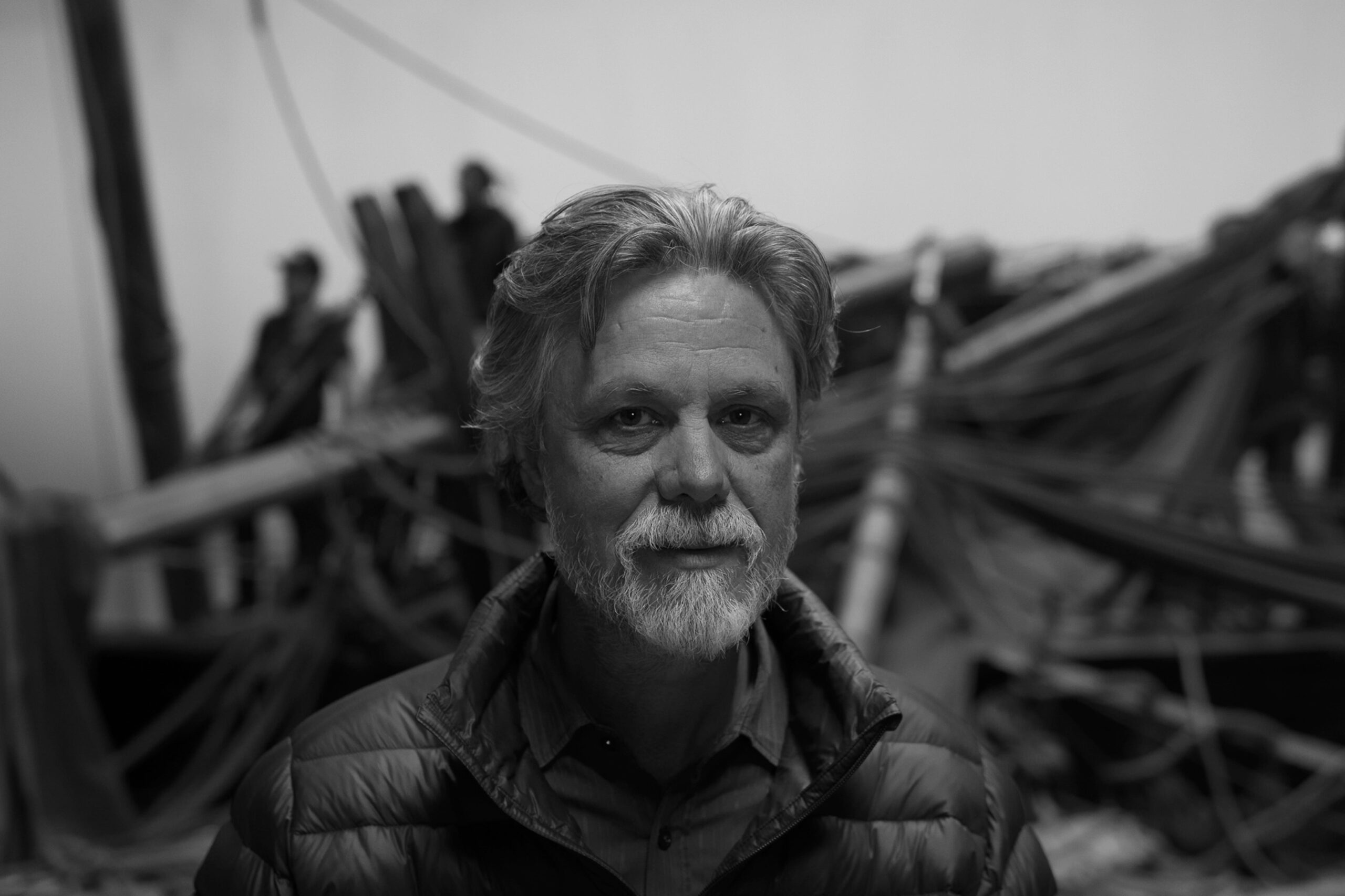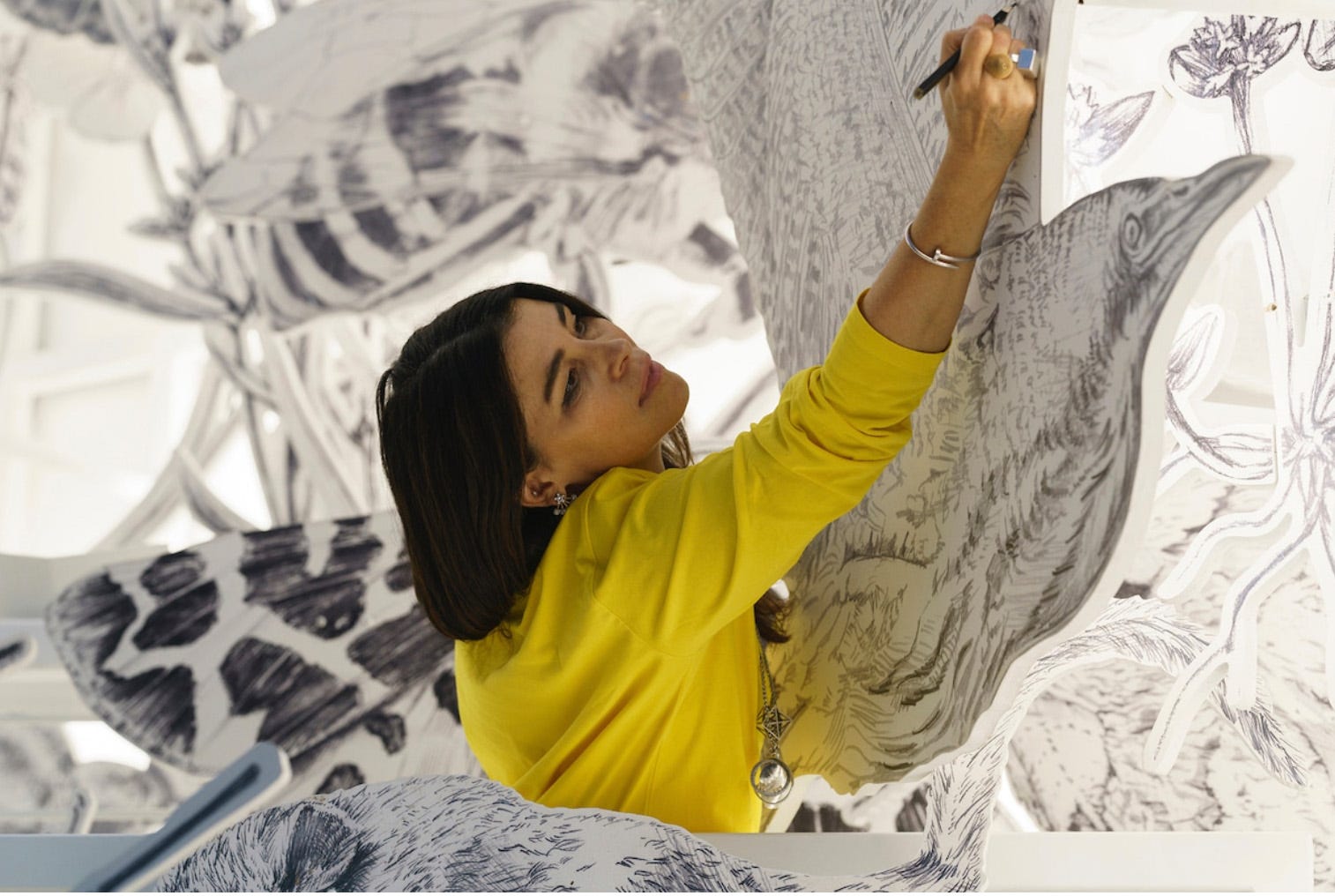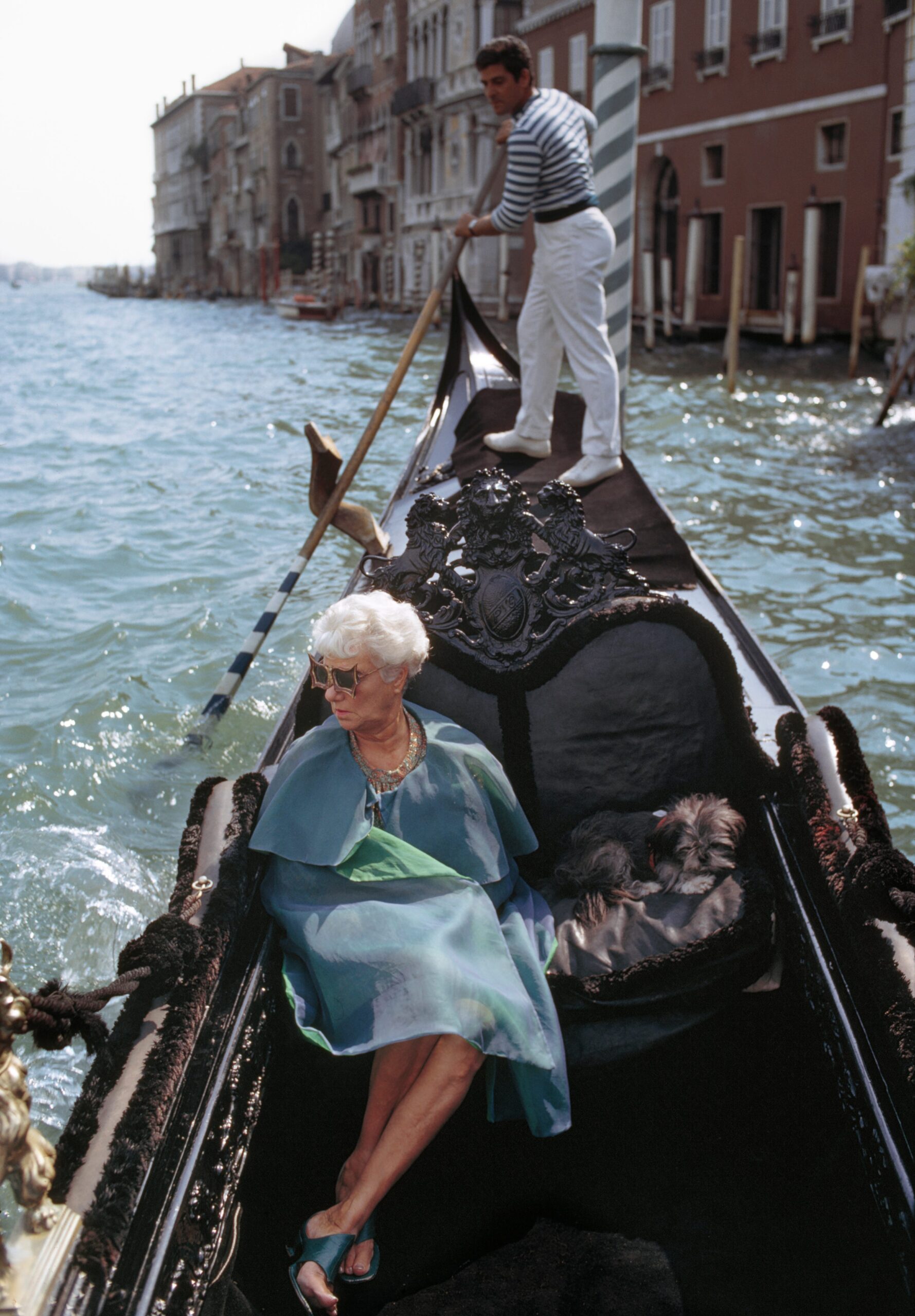When a resort spends time building relationships with local artisans, sourcing ingredients from local farms, and honoring indigenous healing traditions (with insight actually from indigenous people) in their spa, all before opening its doors, you can feel the difference. At the newly-opened Waldorf Astoria Costa Rica Punta Cacique, the indigenous Chorotega people are partners and the experience is authentically Costa Rican.
The resort’s design blends traditional Costa Rican design with modern architecture and embraces the natural contours and cultural richness of the Guanacaste region. Designed by Sordo Madaleno Arquitecos of Mexico City, the property cascades 300 feet from the top of the peninsula to the beach. The color palette and textures are inspired by the local environment—coastal rock greys, earthy browns, and lush greens—allowing the resort to blend seamlessly into the hillside, almost invisible from the ocean.
The hotel integrated native plants into the design to cover portions of the structure over time. The team collaborated with local artisans to source regional materials, creating custom furniture, fixtures, and equipment and the resort’s chosen artwork was produced by Costa Rican artists and Guanacaste local artisans. Among our favorites: The classic Waldorf Astoria clock, reimagined with local influences by artist Ingrid Rudelman.
As for the accommodations, among the 40 suites, 22 feature private plunge pools along with an outdoor soaking tub. My particular suite had one, along with floor-to-ceiling windows that dissolved the boundaries between the inside and the Pacific. The spa-inspired bathroom featured an oversized shower with two (!) rain shower heads that overlook the ocean (why shouldn’t your morning routine include sea views?).
At the spa, I surrendered to the Trapiche Ritual, which began with an exfoliating raw sugar scrub, followed by a honey body wrap, and concluded with a full-body massage that left me feeling completely renewed. Afterwards, the sound healing treatment was transcendent—I slipped into the kind of restful state within an hour that usually takes me a week of vacation to (maybe) achieve.
More magic: the food. Executive chef Nicolas Piatti and food and beverage director Ana Martinez created six dining restaurants heavily influenced by Guanacaste. The culinary program is rooted in the heritage of the Chorotega people, and the resort has built partnerships with local farms and producers—many of their ingredients are sourced locally from Guanacaste farms, coastal waters, and nearby plantations. And, they make the best guacamole I’ve ever tried.
The resort’s multi-level pool cascades from highest to lowest tiers, including loungers resting just below the water’s surface with canvas-cushioned sunbeds along the wooden deck. Guanacaste is Costa Rica’s driest province with two seasons: dry (December to April) brings virtually no rain and abundant sunshine, and wet (May to November) transforms the landscape into lush greenery—though even then, the region receives only 50-60 inches of rainfall. But don’t fear the wet season—rain came only in the evenings, while days were filled with warm weather and sunshine. This reliable climate allows for swimming, paddleboarding, kayaking (a must-do!), and boating year-round along the idyllic stretch of Playa Penca.
Waldorf Astoria Costa Rica Punta Cacique succeeds where many luxury resorts falter. It feels authentically connected to the place it inhabits, written in volcanic stone, native flora, and endless Pacific views.

Julia Cancilla is the engagement editor (and resident witch) at ELLE Decor, where she oversees the brand’s social media platforms, covers design trends and culture, and writes the monthly ELLE Decoroscope column. Julia built her background at Inked magazine, where she grew their social media audiences by two million and penned feature articles focusing on pop culture, art, and lifestyle.








